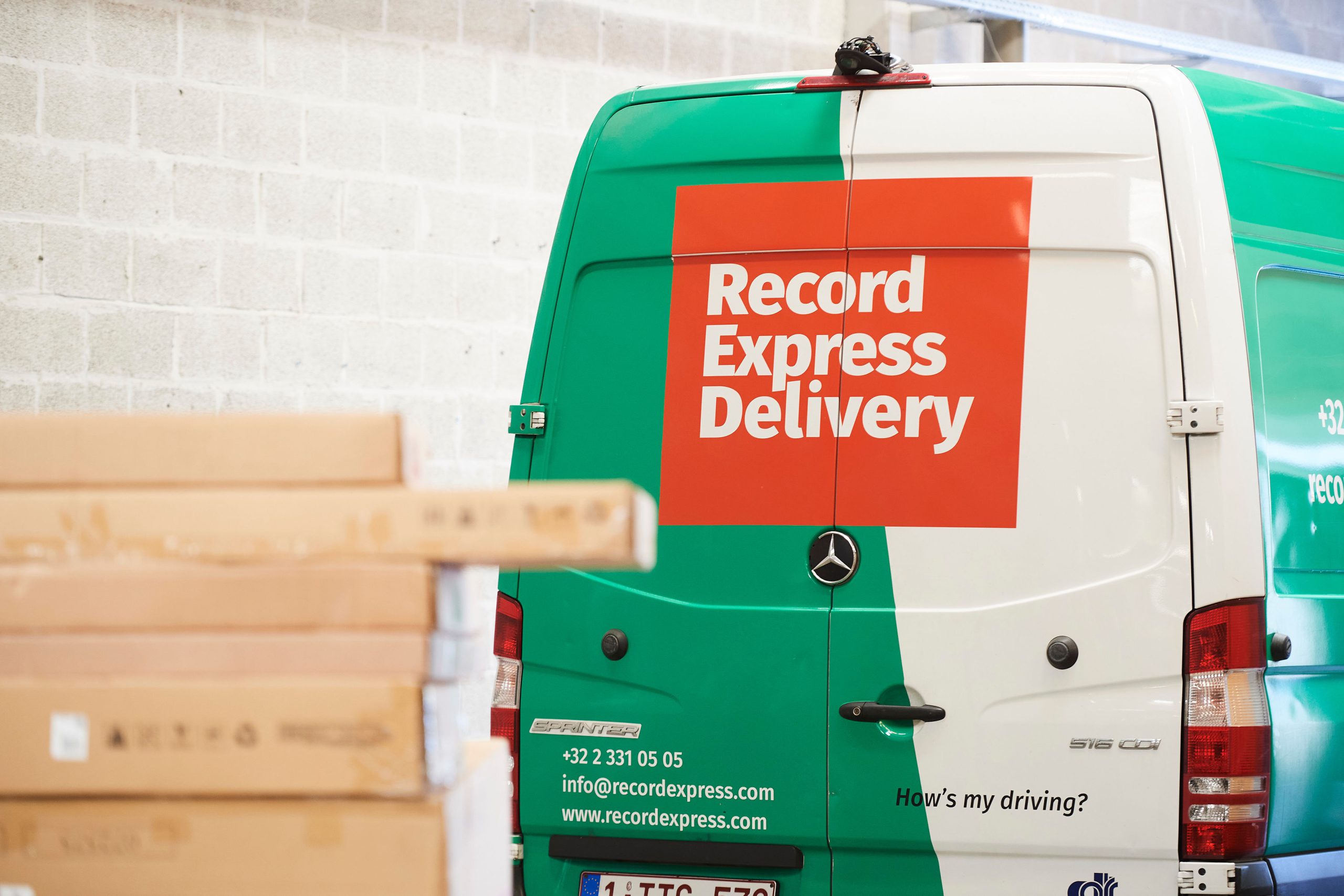The Role of Micro-Hubs in Commercial Freight Distribution
SEND PARCELHome / Our Business Areas / Industry / The Role of Micro-Hubs in Commercial Freight Distribution

Micro-hubs are small, decentralised logistics centres placed close to urban demand. In Belgium, they reduce congestion, cut emissions, and improve delivery reliability by allowing carriers to consolidate line-haul loads and re-distribute with LEZ-compliant vans or bikes. They also support reverse flows, returns, and shared infrastructure for multiple operators. Record Express operates and integrates with micro-hubs across Brussels, Antwerp, Ghent, and secondary cities to offer greener, faster freight solutions for B2B shippers.
What are micro-hubs and why do they matter in freight?
Direct answer: Micro-hubs are small-scale logistics facilities near urban centres that allow consolidation, deconsolidation, and final-mile redistribution. They matter because they cut congestion, lower costs, and support LEZ-compliant urban deliveries.
Unlike mega-warehouses on the periphery, micro-hubs sit inside or at the edge of cities, often repurposed from car parks, industrial lots, or modular structures. They receive bulk shipments from regional centres, break them down into smaller loads, and dispatch with light vehicles or cargo bikes. In Belgium, where urban density and LEZ rules make large trucks costly, micro-hubs are the connective tissue between regional freight and local demand. They also support reverse logistics: returns, recycling flows, and repairs. For B2B freight, they offer shared, neutral infrastructure so multiple carriers can deliver more efficiently while keeping city centres livable.
How do micro-hubs reshape Belgian urban logistics?
Direct answer: They allow consolidation at the city edge, swap long-haul trucks for compliant vans or bikes, and create shorter delivery radii—boosting speed and sustainability.
In Brussels, Antwerp, and Ghent, micro-hubs enable shippers to avoid congestion and fines by staging large vehicles outside the LEZ and distributing inside with smaller compliant fleets. For customers, that means more reliable delivery windows and reduced failure rates. For operators, it means fuller loads, fewer empty miles, and lower emissions intensity per delivery. Belgian city governments are supporting micro-hubs as part of smart mobility and climate strategies. The outcome: lower congestion, better air quality, and more competitive freight networks that meet EU sustainability targets.
| Benefit | How it works | Belgian context |
|---|---|---|
| Reduced congestion | Keeps heavy trucks out of cores | Brussels LEZ, Antwerp ring road |
| Lower emissions | EV/bikes for final leg | LEZ compliance requirements |
| Improved reliability | Shorter last-mile radius | Dense urban cores |
| Shared infrastructure | Multiple carriers use one hub | Public-private pilots in Brussels |
What functions do micro-hubs support beyond last-mile?
Direct answer: They act as nodes for reverse logistics, returns handling, recycling, temporary storage, and even value-added services like kitting or cross-docking.
For freight operators, the value of a micro-hub is not just outbound delivery. It is also inbound: collecting returns, consolidating repair flows, staging equipment for crews, or temporarily storing high-turnover stock. Some hubs provide light processing such as labelling or kitting. Others act as cross-dock points where freight changes mode (truck to van, van to bike). For Belgian retailers and industrial players, this reduces long detours for returns and speeds up customer service. It also provides more touchpoints for proof-of-condition and ePOD, cutting disputes.
How do micro-hubs impact cost structures for B2B freight?
Direct answer: They shift cost from line-haul congestion penalties and failed deliveries to efficient consolidation and compliant final-leg fleets.
Micro-hubs require investment—space, staff, systems—but they unlock savings by reducing fines, empty mileage, and failed deliveries. They allow more drops per route and higher density in city cores. For shippers, that translates into lower cost per successful delivery, even if line-haul costs rise slightly. Belgian operators increasingly run shared micro-hubs to spread fixed costs across multiple carriers and customers. The economics improve further when hubs support both forward and reverse flows, maximising utilisation of vehicles and staff.
| Cost driver | Without micro-hub | With micro-hub |
|---|---|---|
| Congestion fines | Higher, trucks enter city cores | Lower, last-mile vans compliant |
| Failed deliveries | More common, longer routes | Reduced, shorter windows |
| Cost per drop | Higher, low density | Lower, high density |
| Fixed infrastructure | None | Present but shared |
What role do policy and regulation play in micro-hub adoption?
Direct answer: LEZ rules, congestion pricing, and EU climate targets push operators toward micro-hubs, while Belgian city councils are piloting hubs with public-private partnerships.
Policy is the accelerator. Brussels has tightened its LEZ entry requirements yearly; Antwerp and Ghent follow. EU climate directives require urban freight emissions reductions. City councils offer subsidies, zoning support, or public land for pilot hubs. These policies make micro-hubs economically and operationally attractive. Without them, many carriers would stick to central depots. For Belgian freight operators, aligning with policy is not optional—it’s a licence to operate. Companies that integrate micro-hubs now will be better positioned as rules tighten further by 2030.
Which KPIs show whether a micro-hub strategy is working?
Direct answer: Delivery success rate, cost per drop, emissions per delivery, vehicle utilisation, and reverse logistics turnaround times.
Measuring micro-hub success is vital for ROI and for policy compliance. On the service side, look at delivery success rate and average delivery window accuracy. On the cost side, measure cost per drop and vehicle fill rates. For sustainability, track emissions intensity (CO₂ per parcel or tonne). For reverse flows, measure turnaround time from pickup to triage. These KPIs prove the business case and show stakeholders—shippers, carriers, regulators—that micro-hubs add real value beyond marketing claims.
| KPI | Target | Why it matters |
|---|---|---|
| Delivery success rate | ≥ 98% | Proves reliability |
| Cost per drop | Reduced YoY | Efficiency improvement |
| Emissions intensity | YoY reduction | Sustainability and compliance |
| Vehicle utilisation | ≥ 85% | Maximises asset use |
| Reverse flow turnaround | ≤ 48h | Keeps returns efficient |
How does Record Express integrate micro-hubs into Belgian freight?
Direct answer: By operating suburban hubs, partnering on city-centre pilots, and running compliant last-leg fleets, Record Express turns policy into practice.
Record Express manages suburban hubs near Brussels and Antwerp, using them for staging, consolidation, and returns. We partner with public and private actors on city-centre micro-hubs, providing compliant EV vans and cargo bikes for last-leg delivery. Our digital systems integrate slot booking, ePOD, and emissions reporting, so customers see not only where their goods are but also the sustainability profile of each delivery. We also fold reverse flows—returns, recycling, repairs—into the same hub network. For Belgian B2B shippers, this means a single partner can meet service, cost, and compliance requirements through one coordinated system.
Talk to Record Express about micro-hub integration and LEZ-compliant urban freight solutions.
FAQ
Do micro-hubs only work in large cities?
No. They are viable in secondary Belgian cities too—Leuven, Liège, and Bruges—especially when shared across multiple carriers.
Are micro-hubs expensive to set up?
They require investment, but shared models and public-private partnerships reduce cost and spread risk.
Can micro-hubs support reverse logistics?
Yes. They handle returns, recycling, repairs, and refurb streams alongside outbound deliveries.
Sources & Further Reading
- Record Express — Warehouse-to-Site Logistics
- Record Express — Industrial Last-Mile
- Brussels Capital Region — Low Emission Zone

Record Express was awarded a 59/100 score by EcoVadis, the global leader in sustainability ratings.